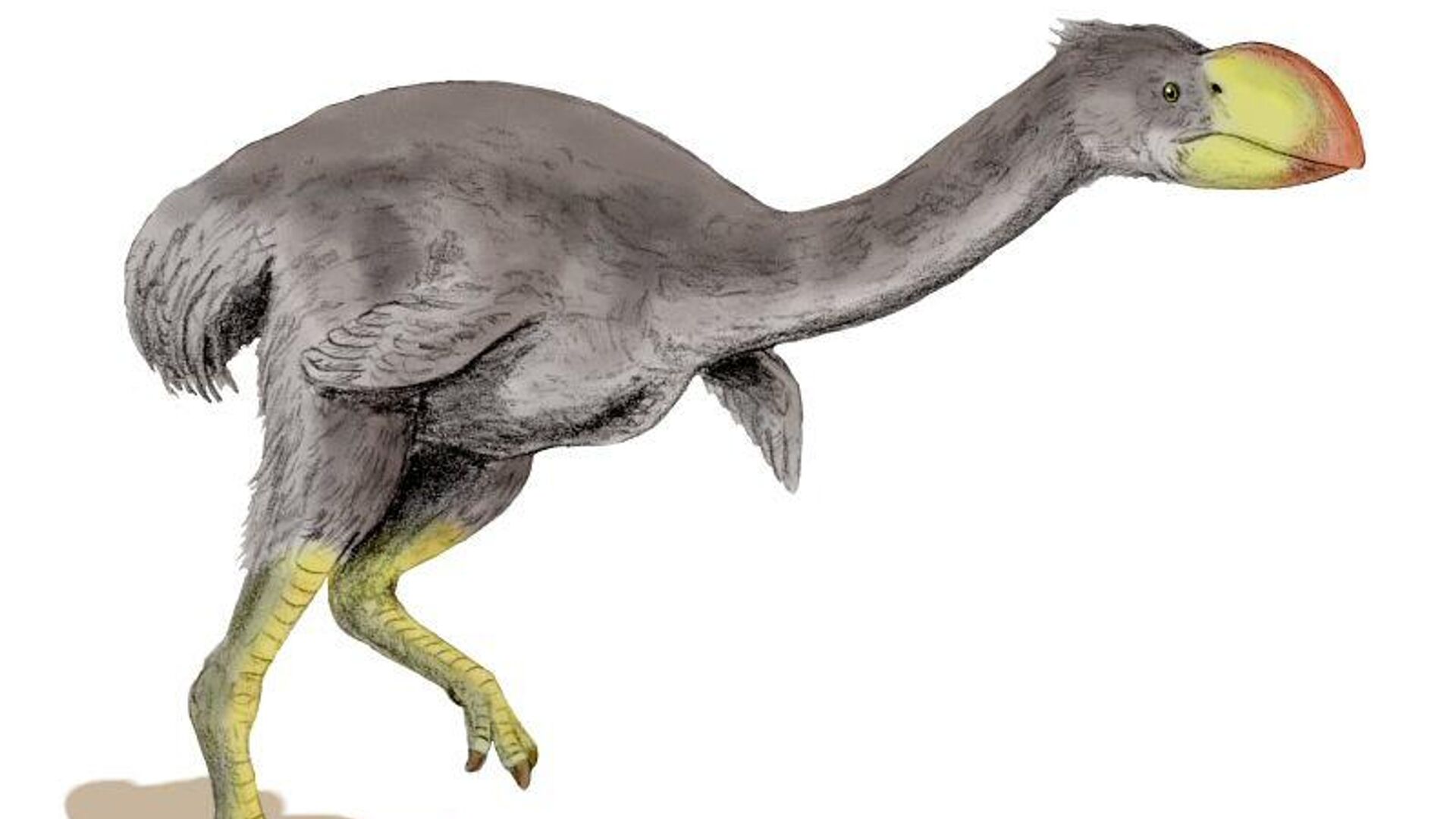Fossilized Leg Bones of Potentially Largest Bird Ever Unearthed in Australia
18:29 GMT 05.10.2022 (Updated: 18:40 GMT 05.10.2022)
Subscribe
The bones that apparently belonged to one of the long-extinct creatures known as Dromornis stirtoni were found at Alcoota Reserve.
Skeletal fragments that might have belonged to possibly the largest bird species that ever existed have been discovered in Australia.
The creature in question, known as Dromornis stirtoni or Stirton’s thunderbird, were massive feathered birds around three meters tall weighing around 450-500 kilograms, according to a description on the Australian Museum’s website.
Traces of these long-extinct avians have so far only been found in Australia, dating back to the Late Miocene period that ended over five million years ago.
What makes the recent discovery stand out is the fact that the remains of one of these birds were found articulated for the first time, giving researchers hope that they may recover the entire skeleton, ScienceAlert noted.
"What it means is that the carcass was entire when it was buried," Adam Yates, paleontologist and curator of Earth sciences at the Museum and Art Gallery of the Northern Territory, told the media outlet. "We only got the lower legs because that's as far as we dug. There's every expectation that a large part of the rest of the skeleton – if not the entire skeleton – might be lying in the next dig as we dig further into the bank that the legs come from."
The fossilized leg bones of one of Stirton’s thunderbirds were found in Alcoota Reserve that yielded thousands of fossilized specimens since excavations started back in 1986.
A huge moment at #alcoota2022 with the very first articulated -Dromornis stirtoni- leg excavated from Classy Corner. Thankyou @Phoebyornis for scale! #fossilfriday @fupalaeosoc @FlindersPalaeo pic.twitter.com/mJaKvacOtg
— Museum and Art Gallery of the Northern Territory (@MAG_NT) July 22, 2022
The media outlet pointed out, however, that most of the fossils found there required “painstaking sorting into species and reconstructions involving parts of multiple individual animals” due to the fact that the majority of these discoveries were “jumbled fragments of different species thanks to historic flood waters mixing up the remains.”
"Even if you get all the species right – you put the right bones with the right species all together – you're still going to have proportional errors because of course there's natural variation between individuals," Yates remarked.

